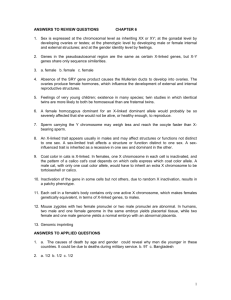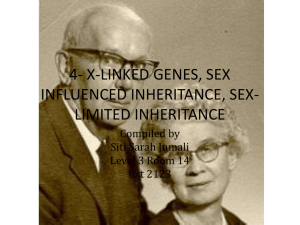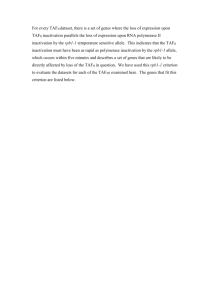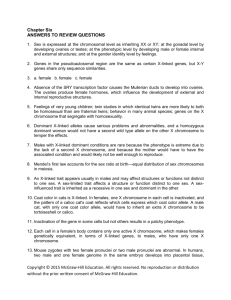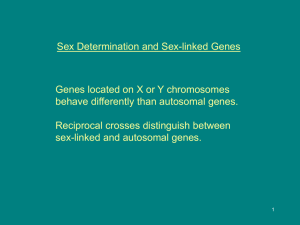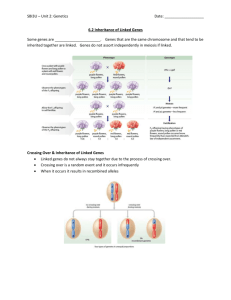Name: Chapter 6 Homework Questions List the cell types and
advertisement
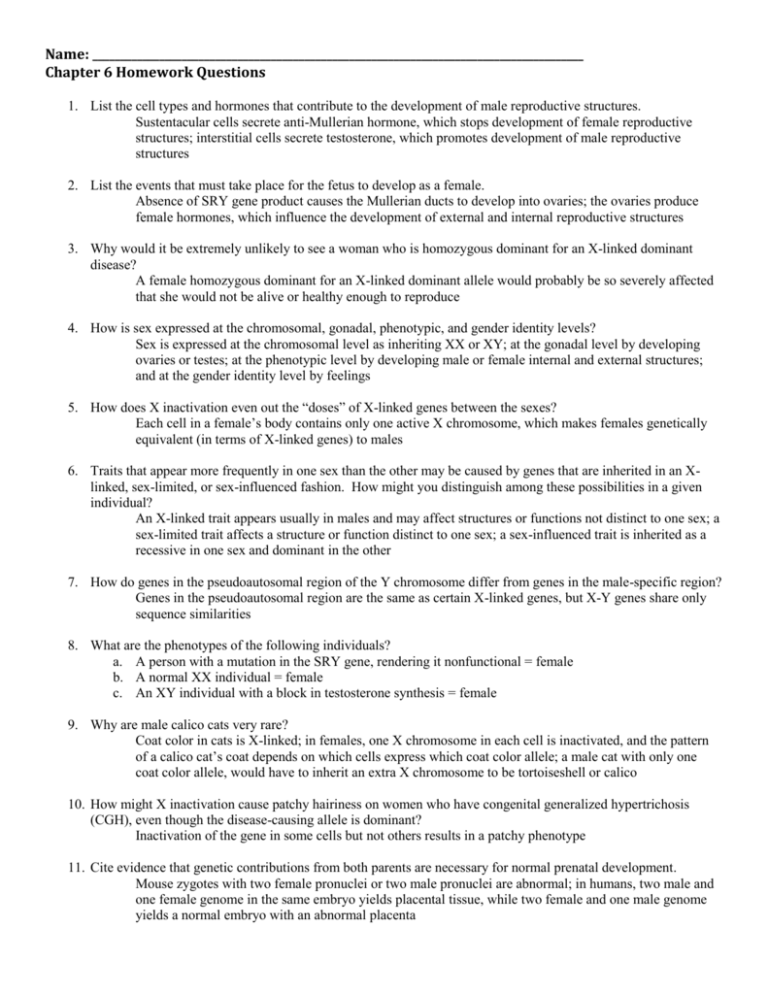
Name: ________________________________________________________________________________________ Chapter 6 Homework Questions 1. List the cell types and hormones that contribute to the development of male reproductive structures. Sustentacular cells secrete anti-Mullerian hormone, which stops development of female reproductive structures; interstitial cells secrete testosterone, which promotes development of male reproductive structures 2. List the events that must take place for the fetus to develop as a female. Absence of SRY gene product causes the Mullerian ducts to develop into ovaries; the ovaries produce female hormones, which influence the development of external and internal reproductive structures 3. Why would it be extremely unlikely to see a woman who is homozygous dominant for an X-linked dominant disease? A female homozygous dominant for an X-linked dominant allele would probably be so severely affected that she would not be alive or healthy enough to reproduce 4. How is sex expressed at the chromosomal, gonadal, phenotypic, and gender identity levels? Sex is expressed at the chromosomal level as inheriting XX or XY; at the gonadal level by developing ovaries or testes; at the phenotypic level by developing male or female internal and external structures; and at the gender identity level by feelings 5. How does X inactivation even out the “doses” of X-linked genes between the sexes? Each cell in a female’s body contains only one active X chromosome, which makes females genetically equivalent (in terms of X-linked genes) to males 6. Traits that appear more frequently in one sex than the other may be caused by genes that are inherited in an Xlinked, sex-limited, or sex-influenced fashion. How might you distinguish among these possibilities in a given individual? An X-linked trait appears usually in males and may affect structures or functions not distinct to one sex; a sex-limited trait affects a structure or function distinct to one sex; a sex-influenced trait is inherited as a recessive in one sex and dominant in the other 7. How do genes in the pseudoautosomal region of the Y chromosome differ from genes in the male-specific region? Genes in the pseudoautosomal region are the same as certain X-linked genes, but X-Y genes share only sequence similarities 8. What are the phenotypes of the following individuals? a. A person with a mutation in the SRY gene, rendering it nonfunctional = female b. A normal XX individual = female c. An XY individual with a block in testosterone synthesis = female 9. Why are male calico cats very rare? Coat color in cats is X-linked; in females, one X chromosome in each cell is inactivated, and the pattern of a calico cat’s coat depends on which cells express which coat color allele; a male cat with only one coat color allele, would have to inherit an extra X chromosome to be tortoiseshell or calico 10. How might X inactivation cause patchy hairiness on women who have congenital generalized hypertrichosis (CGH), even though the disease-causing allele is dominant? Inactivation of the gene in some cells but not others results in a patchy phenotype 11. Cite evidence that genetic contributions from both parents are necessary for normal prenatal development. Mouse zygotes with two female pronuclei or two male pronuclei are abnormal; in humans, two male and one female genome in the same embryo yields placental tissue, while two female and one male genome yields a normal embryo with an abnormal placenta
